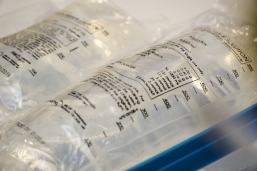Ask us a question?
Perioperative Care
Fluid Therapy
A healthy adult, without extra losses, requires 2 to 2.5 litres of fluid to counter-balance 1.5 litre urinary loss and 500-800ml of insensible losses. Surgical patients may occasionally require more than this due to the increased losses from pre-operative starvation, stomata, fistulae, diarrhoea, naso-gastric tube losses, vomit and so forth.
The principle objectives of peri-operative fluid management include:
- Assessment of haemodynamic state and fluid responsiveness.

- Ensuring adequate circulatory volume.
- Ensuring optimal fluid and electrolyte balance.
- Ensuring optimal oxygen delivery to the tissues.
- Avoidance of ischaemia, interstitial oedema and anastomotic leak.
- Tailor fluids to individual needs.
- Monitor potassium levels and supplement if necessary.
- Oral fluids as soon as tolerated.
- Early risk assessment for special nutritional needs.
- Consideration of enteral feed for malnourished patients and parenteral feed for the severely malnourished.
NICE guidelines recommend a maintenance fluid and electrolyte requirement of 25-30ml/kg/day water and 1mmol/kg/day sodium, potassium and chloride. The British Consensus Guidelines on IV Fluids for Adult Surgical Patients (GIFTASUP) recommend low volume maintenance fluid of 1-1.5ml/kg/hr. Post-operative oliguria is a normal physiological response to surgery and locally we recommend a maintenance rate of 0.5ml/kg/hr with fluid boluses for resuscitation if required.
If adequate fluid resuscitation has occurred and patients are able to take oral fluids in the post-operative period many of our surgical patients will not require maintenance fluid in the peri-operative period.
A plethora of fluids are used in medical practice. Isotonic fluids are routinely used in managing peri-operative patients. Examples are:
- Dextrose/saline is avaliable in differing concentrations. Common use includes 0.45% NaCl/2.5% Dextrose and 0.18%NaCl/4%Detrose. Dextrose/saline helps maintain circulation and also contributes to the energy requirement. Locally it is our preferred maintenance solution in the perioperative period.
- Hartmann’s fluid, as shown in the table below, consists of electrolyte concentration similar to extracellular fluid, hence more physiological than saline and preferred as maintenance fluid in post-operative patients. Notably given alone, Hartmann’s fluid does not meet the adult requirements of potassium and calories and potassium supplement and dextrose fluid are required.
- 0.9% NaCl, one of the most commonly prescribed fluid. Its high sodium concentration makes it a good choice of fluid in resuscitation. However, its high chloride content causes hyperchloraemic metabolic acidosis. We do not commonly use it as a maintenance fluid as further dextrose and potassium chloride would be required to meet the to meet at patients caloric and electrolyte requirement of patients.
- 5% Dextrose, is used as maintenance fluid to meet caloric requirements of NBM patients or in conjunction with sliding scale insulin. As glucose is metabolised, water content is widely distributed intracellularly and extracellularly, which makes it an ineffective resuscitation fluid.
|
Fluid |
Na+(mmol/L) |
K+(mmol/L) |
Cl-(mmol/L) |
Ca+(mmol/L) |
Lactate(mmol/L) |
Glucose(g/L) |
|
0.9% NaCl |
150 |
- |
150 |
- |
- |
- |
|
5% Dextrose |
- |
- |
- |
- |
- |
50 |
|
Hartmann’s |
130 |
5 |
110 |
2 |
30 |
- |
|
0.45% NaCl/ 2.5% Dextrose |
75 |
- |
75 |
- |
- |
25 |
|
0.18% NaCl/ 4% Dextrose |
30 |
- |
30 |
- |
- |
40 |
|
Extracellular |
135-146 |
3.5-5 |
98-102 |
2.2-2.7 |
- |
7-10 |

